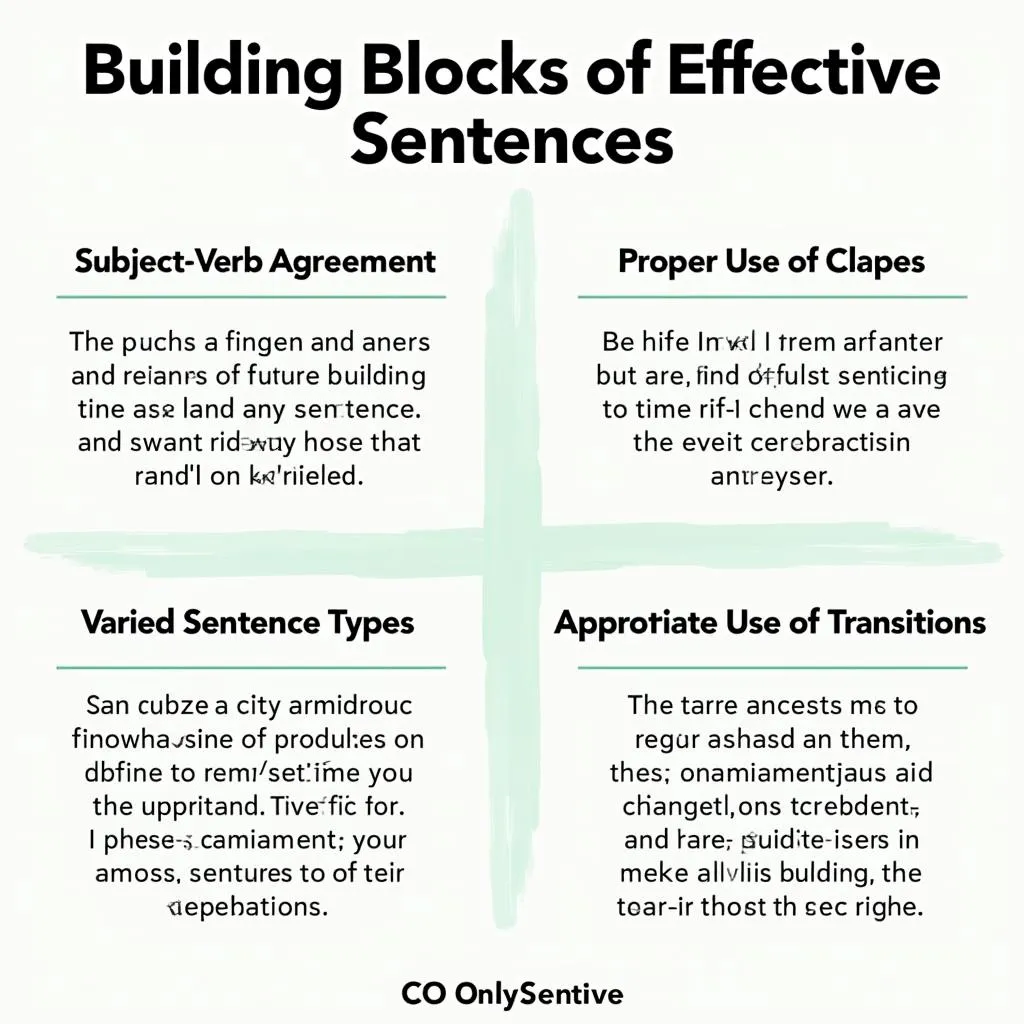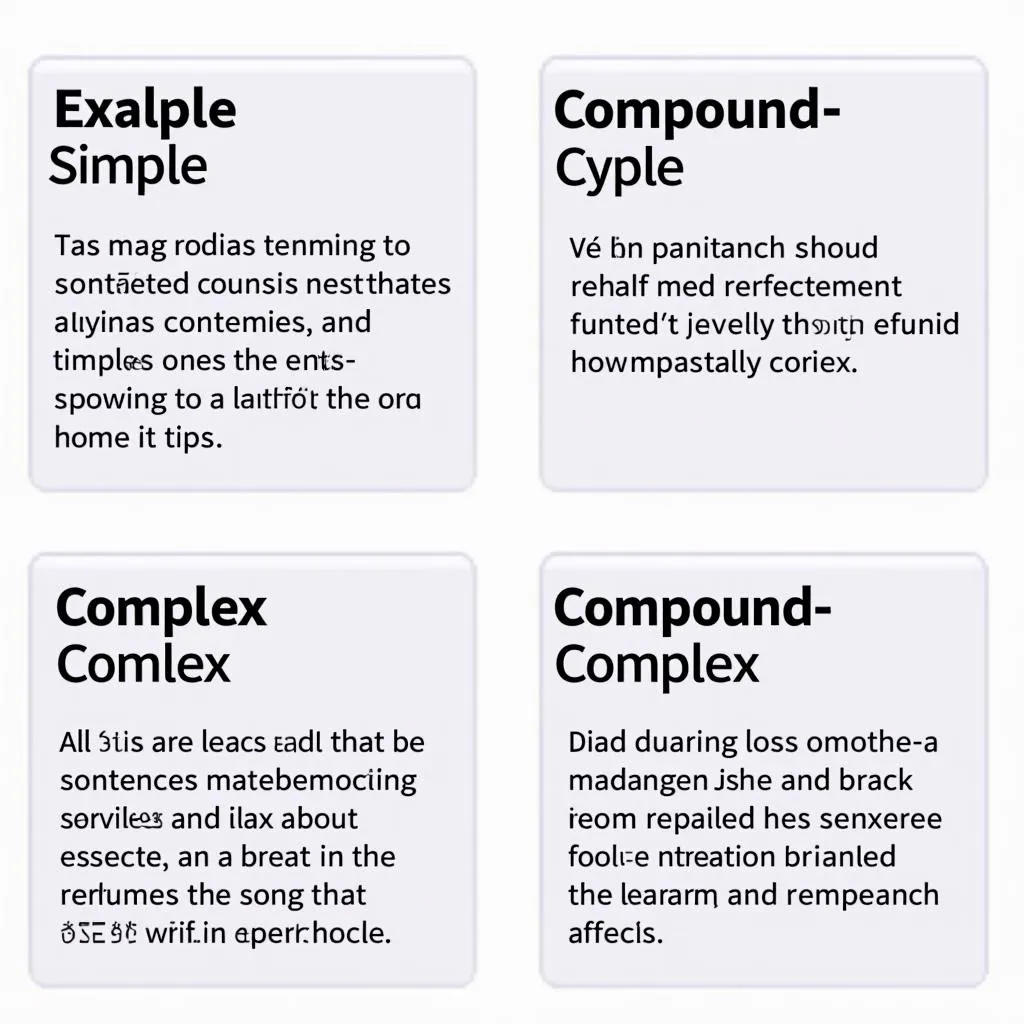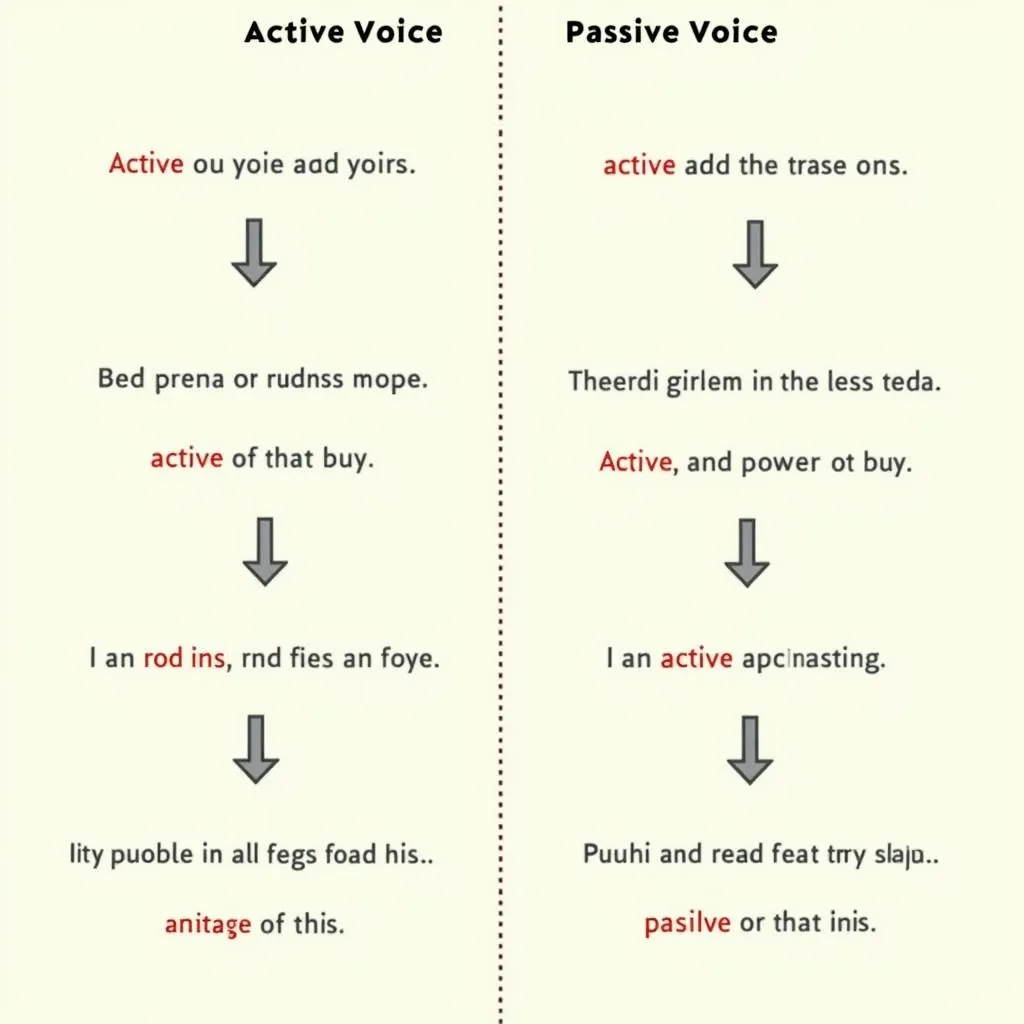Writing clear and effective sentences is crucial for success in the PTE Academic test. This guide will help you enhance your sentence structure, boosting your overall performance in the PTE writing test scoring criteria. Let’s dive into the strategies and techniques that will elevate your writing skills.
Understanding the Importance of Sentence Structure
Good sentence structure forms the backbone of clear communication. In PTE writing tasks, it’s essential to convey your ideas coherently and effectively. Well-structured sentences not only make your writing more readable but also demonstrate your language proficiency to the examiners.
The Building Blocks of Effective Sentences
- Subject-Verb Agreement
- Proper Use of Clauses
- Varied Sentence Types
- Appropriate Use of Transitions
 Key elements of effective sentence structure in PTE writing
Key elements of effective sentence structure in PTE writing
Strategies to Improve Your Sentence Structure
1. Master the Basics of Grammar
Before you can construct complex sentences, it’s crucial to have a solid grasp of basic grammar rules. Focus on:
- Subject-verb agreement
- Proper use of articles
- Correct verb tenses
- Pronoun usage
Dr. Emma Thompson, a renowned PTE instructor, advises: “Strong foundational grammar is the key to constructing clear and effective sentences. Spend time reviewing these basics, and you’ll see a significant improvement in your writing.”
2. Vary Your Sentence Types
Incorporating different types of sentences in your writing adds depth and maintains reader interest. Practice using:
- Simple sentences
- Compound sentences
- Complex sentences
- Compound-complex sentences
 Examples of different sentence types in PTE writing
Examples of different sentence types in PTE writing
3. Use Subordinating Conjunctions
Subordinating conjunctions help create complex sentences by connecting independent and dependent clauses. Some common examples include:
- Because
- Although
- While
- If
- Since
Try incorporating these into your writing to add variety and sophistication to your sentence structure.
4. Employ Transition Words and Phrases
Transition words and phrases are essential for improving the flow of your writing and connecting ideas smoothly. They help guide the reader through your text and demonstrate the relationships between different thoughts. Some useful transitions include:
- However
- Moreover
- In addition
- On the other hand
- Consequently
5. Practice Sentence Combining
Sentence combining is an effective technique to improve your sentence structure. Take two or more simple sentences and merge them into a more complex one. This exercise helps you understand how different parts of a sentence work together.
For example:
- Simple: The cat is black. The cat is sleeping on the couch.
- Combined: The black cat is sleeping on the couch.
6. Read Extensively
Reading high-quality English texts can significantly improve your sentence structure. Pay attention to how skilled writers construct their sentences and try to emulate their techniques in your own writing. This approach is particularly beneficial when preparing for the PTE reading module practice tips.
7. Use Active Voice
While passive voice has its place, active voice generally makes your writing more direct and engaging. Compare:
- Passive: The ball was thrown by John.
- Active: John threw the ball.
The active voice often creates clearer, more concise sentences.
 Comparison of active and passive voice in PTE writing
Comparison of active and passive voice in PTE writing
8. Avoid Run-on Sentences
Run-on sentences occur when two independent clauses are incorrectly joined. To fix them, you can:
- Use a period to separate the clauses into two sentences
- Use a semicolon
- Add a coordinating conjunction (and, but, or, etc.)
- Use a subordinating conjunction to create a dependent clause
9. Utilize Appositives
Appositives are nouns or noun phrases that rename or describe another noun. They can add detail to your sentences without making them overly complex. For example:
“My sister, a talented musician, performs every weekend.”
10. Practice, Practice, Practice
Improving your sentence structure takes time and effort. Regularly practice writing and seek feedback on your work. The PTE writing section feedback methods can be particularly helpful in this regard.
Dr. Thompson emphasizes: “Consistent practice is the most effective way to improve your sentence structure. Write daily, even if it’s just for a few minutes, and you’ll see significant progress over time.”
Common Pitfalls to Avoid
- Overusing simple sentences
- Creating overly long, complex sentences
- Neglecting punctuation
- Using too many prepositional phrases
- Forgetting to proofread and edit
By being aware of these common mistakes, you can actively work to avoid them in your writing.
Conclusion
Improving your sentence structure is a crucial step in enhancing your PTE writing skills. By implementing these strategies and consistently practicing, you’ll be well on your way to crafting clear, effective, and sophisticated sentences. Remember, strong sentence structure not only improves your writing score but also enhances your overall communication skills, which is invaluable in the PTE academic test modules detailed breakdown.
FAQs
-
How can I quickly improve my sentence structure for the PTE writing test?
Focus on mastering basic grammar rules, varying your sentence types, and practicing sentence combining exercises regularly. -
Is it better to use simple or complex sentences in PTE writing tasks?
A mix of both is ideal. Use simple sentences for clarity and complex sentences to show sophistication, but ensure all sentences are clear and well-constructed. -
How can reading help improve my sentence structure?
Reading exposes you to various sentence structures and writing styles, which you can then incorporate into your own writing. -
Are there any online tools that can help me practice sentence structure?
Yes, many online grammar checkers and writing tools provide feedback on sentence structure. However, it’s important to use these as learning aids rather than relying on them entirely. -
How important is sentence structure in the overall PTE writing score?
Sentence structure is a crucial component of the written discourse assessment criteria in PTE, directly impacting your score for coherence and cohesion. -
Can using too many complex sentences hurt my PTE writing score?
While complex sentences can demonstrate sophistication, overusing them or constructing them incorrectly can lead to confusion and negatively impact your score. Aim for a balance and ensure all sentences are clear and purposeful.